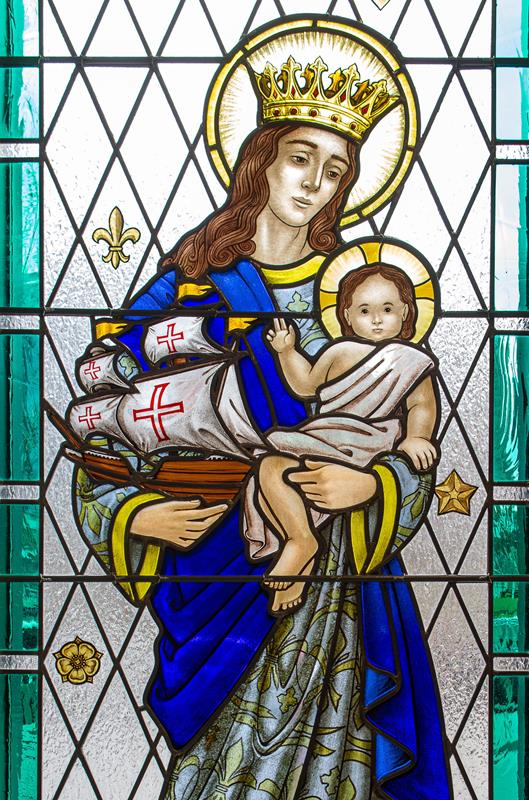 A stained-glass window of Our Lady of Good Voyage is seen at the shrine named for the Marian image in South Boston's Seaport District in this undated photo. The Shrine of Our Lady of Good Voyage is also known as the Seaport Shrine. (OSV News photo/Donis Tracy)BOSTON — "Bring them safely home." That is the prayer that generations of sailors' families and friends have offered from the Shrine of Our Lady of Good Voyage in South Boston.
A stained-glass window of Our Lady of Good Voyage is seen at the shrine named for the Marian image in South Boston's Seaport District in this undated photo. The Shrine of Our Lady of Good Voyage is also known as the Seaport Shrine. (OSV News photo/Donis Tracy)BOSTON — "Bring them safely home." That is the prayer that generations of sailors' families and friends have offered from the Shrine of Our Lady of Good Voyage in South Boston.
On June 19 and 20, the shrine community had offered that petition again, this time for the five passengers on a submersible vessel named Titan that lost communication June 18 shortly after diving into the North Atlantic approximately 900 miles east of Cape Cod and 400 miles south of St. John's, Newfoundland, for an expedition to the wreck of the Titanic.
Susan Abbott and Kathy Stebbins, the co-directors of the Seaport Shrine, as it's better known, felt that praying for the passengers and the international rescue effort was in line with the shrine's mission.
"This is why we're here. We pray for safety on the water," Abbott said June 20.
But two days later, after the American and Canadian military had raced to find the Titan since it went missing, the U.S. Coast Guard's Rear Adm. John Mauger announced the grim news in a late afternoon briefing that the vessel was believed to have imploded, killing all five aboard.
Mauger said that a deep-sea robot had found the Titan's tail cone and other debris about 1,600 feet from the bow of the Titanic at the bottom of the North Atlantic -- about 2.5 miles below the surface of the ocean. Experts determined the debris was consistent with the small vessel.
The five people aboard were Stockton Rush, 61, founder of OceanGate Inc., the company that made the vessel; billionaire adventurer Hamish Harding, 58; Shahzada Dawood, 48, and Suleman Dawood, 19, a father and son from one of Pakistan's most prominent families; and Paul-Henry Nargeolet, 77, a former French navy officer.
In a statement, Ocean Gate called the men "true explorers" who "shared a distinct spirit of adventure."
Communication with the submersible, which relied on a surface ship for direction, was lost about one hour and 45 minutes into the dive, at a depth of about 13,000 feet, or 2.4 miles, according to the Coast Guard. The vessel was said to have enough air supply to last the passengers until June 22.
Unlike a submarine, which has enough power to leave and return to port on its own, a submersible has more limited power and range, and relies on a mother ship for support and communications.
Before the fate of the submersible was known, Abbott and Stebbins had placed a sign in the church narthex at the Seaport Shrine and posted a message on their Facebook page about the shrine community offering prayers for the recovery of the Titan and "the safe return of its passengers."
Abbott told The Pilot, Boston's archdiocesan newspaper, that a number of visitors commented on the sign and thanked them for doing that.
The shrine, originally a workers' chapel, was established by Cardinal Richard Cushing over 70 years ago as a place for sailors, fishermen, and longshoremen, as well as their families, friends, and community, to pray for safety at sea.
"We've inherited that mission. How could we not do something?" Abbott said.
— Jacqueline Tetrault, OSV News, is on the staff of The Pilot, newspaper of the Archdiocese of Boston.


